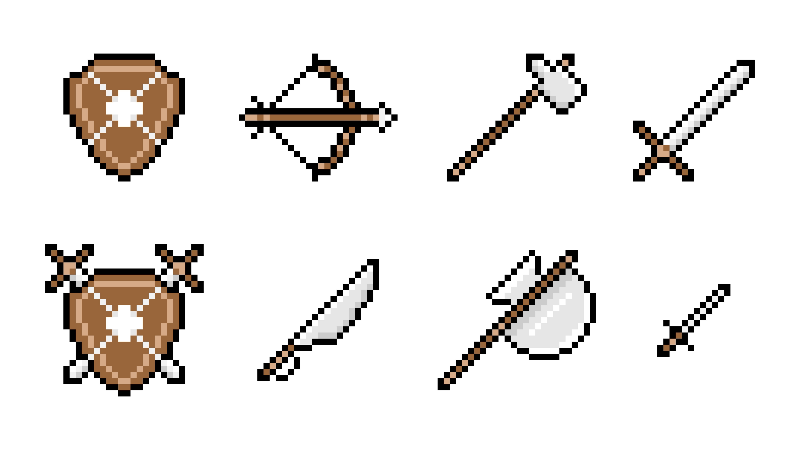How to Play Jungle League of Legends Guide

By Dillan | September 7th, 2022 | Categories: League of Legends
League of Legends is a team battle, which means every teammate has a role to fill in each match. One of the most challenging and impactful parts of LoL is the role of the Jungler. Unlike other lane characters, the jungler must juggle multiple responsibilities and be careful not to fall behind in scaling. Due to the difficulty of playing this role, many gamers try to stay away from playing this part. Fortunately, this guide will provide players with tips on how to play Jungle in League of Legends.
Table of Contents
What Does a Jungler Do?
The jungle can be the trickiest role in LoL since there are many things that players must monitor and execute properly. They must focus on winning their trade-offs and farming their minions for normal lanes. For the jungler, they need to secure objectives, ensure they farm efficiently, and execute successful ganks.
Securing objectives means ensuring they can get epic monsters such as Rift Herald and Drakes and helping lanes push the enemy tower. These targets are impactful, especially if they are done effectively in the early game. Securing the Herald before the 14-minute mark can help the jungler and specific lanes to receive Tower Plating for extra gold. Meanwhile, taking the Drake provides helpful stats buffs to the whole team.
Roaming and ganking mean more than just getting kills off the enemy team. Ganks help teammates win their lanes by alleviating pressure from their side while also getting gold from a takedown. However, these attacks should be made immediately to avoid wasting time.
Above all these responsibilities, junglers should ensure that they consistently and efficiently clear their camps. Many players spend so much time roaming that they forget to remove their jungle creeps. Doing all of these tasks simultaneously can be a bit too much for many gamers.
How to Be an Effective Jungle?
Aside from having the technical skills and basic know-how of League, being a great jungler is all about timing, but before gamers can know when they should be what, they need to learn the most essential things in the jungle. Every aspect of this role requires players to assess what they should be doing at a specific moment and where they should be. Here are the most essential points of jungling:
- Rotations – determines the route or sequence of clearing jungle camps
- Roams – being freely available to help teammates in their lanes via ganks
- Objectives – learning to prioritize which targets are more important to take in the current situation
- Counter Jungle – invading and clearing out the opposing team’s camps
Before we start with the specifics, players should first know the terms commonly used in the game. Here are some of the known terminologies in League of Legends:
- Gank – refers to a single or multiple players flanking or disrupting another lane to get takedowns or assist their teammates.
- CS – means Creep Score, which is the number of minions and jungle spawns killed in the match.
- Freeze Lane – a practice wherein players, passively farm enemy minions by only hitting crucial last hits to ensure that the enemy wave is always near the allied tower.
- Invade – refers to one or more players entering the enemy team’s jungle to steal buffs, camps, and possibly get takedowns.
- Clash – refers to fights involving at least two people from each team.
- Duels – one-versus-one fights
- Feed – refers to when teammates continuously get killed due to ganks or failed duels, and the enemy gets a gold advantage.
- Counter/Countergank – arriving at the same time or shortly after an enemy jungler ganks and is fighting teammates.
If There’s a Ward, Clear It or Avoid It
The main thing that junglers should be wary of is wards. Enemy sights can hinder you from executing successful ganks and securing objectives. They can also help your enemies monitor your movement, which allows them to invade and hunt you. As much as possible, always clear out any wards you encounter in your pathing. If you cannot remove it, avoid staying in that area for the time being.
How to Set the Proper Rotations?
Before the first wave of minions spawn, junglers will choose whether they are going to start at the red or blue camps. This decision will influence the timers of the jungle for a significant amount of time. Before players decide which they should start in, they should ask the following questions:
- Which buff would help me farm faster?
- Do I rely on auto-attacks or my abilities?
- Which lane do I want to gank first?
- Where will the enemy jungler start first?
- Where is the safest place to start?
The first and second questions will determine how quickly junglers can clear their camps to make more time for the ganks. League of Legends champions who rely on auto-attacks should start with a red buff for extra damage, while those dependent on skills should start with the blue buff for the cooldown reduction.
The third question dictates the pathing of the rotation. Basically, if a jungler starts at red, it is ideal for them to gank the bot, and if they start at blue, they should head for the top lane. This is the most efficient setting, but gamers should adjust depending on the situation. Fortunately, summoners can always set up a mid-gank in either rotation.
The fourth is to set up a rotation to counter the enemy jungler or avoid them. Some champions are bad at early engagements before level three, and some are good from the beginning. If you know whether you can handle the opposing farmer, you can decide if you want to avoid him or mirror their rotations to increase the chances of facing off.
The fifth depends entirely on the enemy team and early ward placements. Sometimes the opposing junglers will lead an early invasion to either steal a jungle buff or to get early takedowns. Now, you should decide whether you want to resist the incursion or if you want to play it safe and just farm in another area. In addition to this, making sure that your farm is in an area that is not being monitored by a ward can prevent deaths from further invasions.
When to Roam and Gank?
The primary role of junglers is to support their team by ganking, getting takedowns, and alleviating pressure from the lane. This aspect requires timing the most as a failed gank can result in the enemy lane getting an advantage or your teammates losing their laning phase entirely. Determine when you should start roaming and ganking based on these questions:
- Are my teammates struggling in their lanes?
- Did the enemy push deep in the lane?
- Is there a large wave of minions
- Did my teammate push deep in the lane?
- Is the enemy team freezing their lane?
- Are my teammates constantly getting ganked?
- Can we kill the enemies in the lane?
The first question will determine the immediate need for a gank in a specific lane. When teammates are losing, junglers are often expected to help out the struggling roles to either take back the advantage or at least remove the pressure. Sometimes just ganking to force enemies to recall or retreat is enough to make sufficient breathing space for the team.
The second and third question determines the most appropriate time to do a gank. Enemies who pushed too far and our deep in the lane are vulnerable to opposing junglers, so this is the best time to get some takedowns. However, in cases where the enemy minion wave is too large, ganks should be held off until the layers can farm the minions. Performing a gank when there is a thick wave might result in teammates missing out on valuable gold since they will prioritize the clash instead of CS.
The fourth and fifth are not usually big things to consider, but junglers can help with these aspects depending on the situation. When allies dominate their lane, they often push deep and force enemies to stay under the tower. These situations are when junglers don’t need to gank. However, since teammates are vulnerable in these moments, you can choose to farm close near allies who are deep so that you can respond quickly when they are being attacked by the enemy jungler.
Sometimes, teammates push deep because the enemy team has frozen their lane. At this point, junglers can help reset the lane so that allies can retreat back closer to their area. You can help clear the waves faster or attempt a quick tower dive to make the enemies recall and possibly get takedowns. However, this can be a risky play, so be sure that you are well coordinated for such tactics.
The sixth question checks if enemies are always ganked by a particular lane. When this happens, junglers should determine whether their presence will make a difference or not. Ideally, when allies are constantly harassed, you should provide assistance to alleviate the pressure. Junglers can either arrive in the lane to counter gank or ensure that the laners can survive. However, if your presence will not do anything other than further feed the enemy, then it is best to avoid helping out.
The seventh criterion dictates whether a gank is worth it or not. There are times when a lane has completely lost that a gank from a jungler is not enough. At this point, you should try to help the struggling members with another teammate or focus on another lane. Trying to gank a losing lane when you cannot kill the enemy and have a high chance of getting wiped should be avoided.
Which Objectives to Prioritize?
Aside from ganking, securing objectives is the second most crucial thing that junglers should do. Jungle Objectives include Drakes, Rift Heralds, Baron Nashor, Elder Dragons, and sometimes, Scuttlers. All these monsters provide advantages to the team, so it is best to get them before the enemy team does. Here are some questions to ask yourself regarding objectives:
- How fast can I secure the goal?
- Where is the enemy jungler?
- Is the nearby lane pushed by teammates?
- Can teammates respond to me when clearing the target?
- Is it safe to solo an objective?
- How badly do we need to secure this target?
The first is probably the most basic. Making sure you have enough damage and HP is essential to quickly secure an objective. Taking too long provides an opportunity for the enemy jungler to steal.
The second can be a bit tricky to answer but is very crucial. Before you start a Herald or a Drake, you have to have a rough idea of where the enemy jungle is. The best time to try and secure an objective is when the opposing farmer is on the other side of the map. If you try to clear an Epic Monster when the enemy is near, there is a high chance of them stealing your prey.
The third and fourth question is about ensuring your teammates can help secure the objective. When an allied lane pushes near an enemy tower, this neutralizes the opposing laners to disrupt you while you fight your target. In addition, since the allied minion wave is deep and the enemy is focused on CS, teammates can come help and take down the Drake or Herald.
Sometimes it is unavoidable to take on the Epic Monster alone without backup. The best way to ensure that you successfully secure the objective is to determine the placement of every enemy on the map. If any hostile player is near an Epic Monster camp, then you should avoid trying to take on that zone if you are alone.
When enemies get ahead of objectives, it is sometimes worth trying to risk your lives just to steal or secure an Epic Monster. Depending on how behind you are, sacrificing yourself to steal a Drake, Baron Nashors, or Elder Dragon is crucial. Only consider dying for an objective if: it’s the enemy’s fourth Drake or if the enemy is trying to get Baron or Elder buffs.
One tip that junglers should never forget is to always take the Scuttler as much as possible. These river monsters provide decent exp and provide vision. This can help players monitor ganks much better and prevent enemies from attempting to take an objective.
When Should You Counter Jungle?
Counter Jungling is one of this role’s most complicated and risky tactics. This strategy requires players to invade the enemy farm as much as possible to steal camps and harass the enemy jungler. If done successfully, you can effectively neutralize your opponent and prevent them from progressing. However, things can quickly go wrong, which might result in the enemy team taking a huge lead. Here are the things that you should keep in mind before you do this:
- Can I clear enemy camps fast?
- Can I win or escape a duel versus the enemy jungler?
- Can the enemy teammates respond quickly?
- How often did I invade?
- Is the enemy also invading my camps?
Clearing speed is critical in counter jungling unless you are there to hunt enemies. If you are looking to steal camps, you should do it quickly to avoid getting caught or getting into unnecessary fights. The general idea is to get in and then get out fast.
Half of the time, you will encounter enemy junglers in their camps. There are two ways to get over this, if you can win, then fight, if you can’t, then run. If you are not confident in getting a takedown, make sure to have an escape ability ready to return safely to your territory.
While in the enemy jungle, you must be aware of the enemy laners’ positions. Since you are in hostile territory, you are vulnerable to 1v2 scenarios. Making sure that the opposing jungler’s teammates can’t help them will make your invasions much more effective.
It is not ideal to constantly invade the enemy camps unless you are snowballing or fed. If you frequently steal neutrals on the opposing side, they will be more inclined to ward off their jungle and respond quickly to any incursions. It’s best to be unpredictable, so change your pathing from counter jungling to simple rotations on your own farm. However, if you have already snowballed or are fed, then there is no stopping you from owning the enemy’s jungle.
Gamers should note that counter jungling is only effective if the opposing jungler cannot farm on your side. If the enemy is also stealing camps from your area when you are doing the same thing, then there is no point in invading. In essence, ward and protect your territory while stealing camps from their side.
Jungling Takes Time and Practice
This role might not be the easiest one to learn, but it is one of the most impactful to master. Becoming a great jungler takes time and practice, so don’t fret when you have bad games, as it is part of the process. Don’t be hasty and learn at your own pace so that you can become a pro before a new League of Legends jungle champion appears. I hope this how to play Jungle League of Legends guide is helpful!














